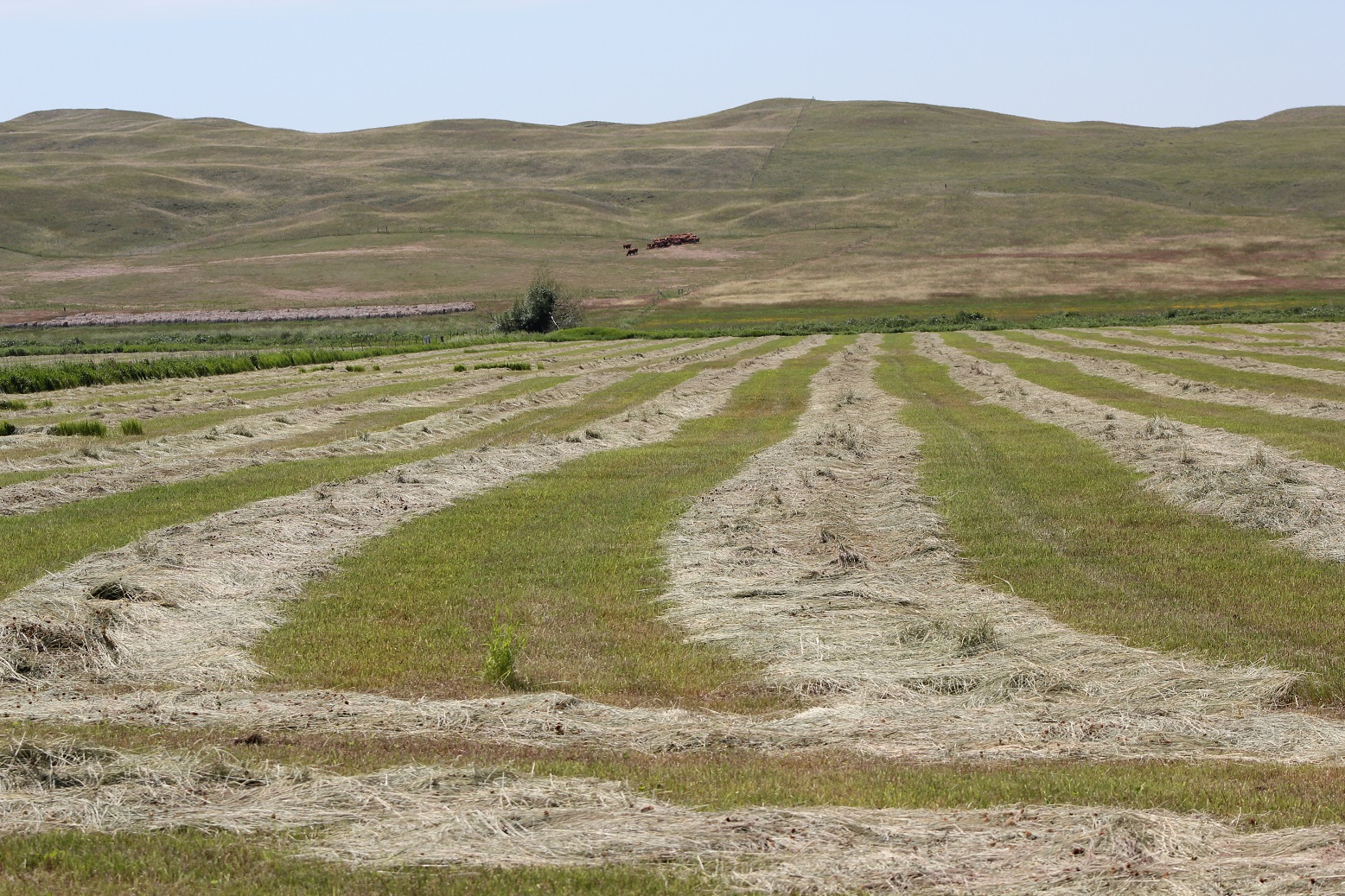
By Daren Redfearn, Nebraska Extension Forage and Crop Residue Specialist
Even though winter feeding has the greatest costs associated with keeping livestock, some hay feeding is inevitable even for the most cost-efficient livestock producers. Several hay management options are available that can reduce the associated costs of extended hay feeding during the winter.
In a hay production system, the only two management practices that are under complete control of the producer are fertility, which directly influences forage yield and plant maturity at harvest which directly influences forage nutritive value. Forage yield is a function of soil type, available moisture, forage type, and fertilizer, primarily nitrogen fertilizer. A common misconception is that fertilizer greatly improves forage nutritive value. With the exception of crude protein (CP), most nutritive value increases are small and amount to less than 2 percentage points. Any advantages gained in increased nutritive value will disappear if the forage is not harvested in a timely fashion.
Plant maturity is the primary factor determining forage nutritive value. An immature plant has more nutritive value and should have greater nutritive value than a mature plant. In general, the greatest quality forage is harvested when the forage plant is in a vegetative stage of growth. As the seedheads begin to appear, forage nutritive value begins to rapidly decline. This is important because hay that tests greater than 10% CP will provide the protein requirement of a lactating beef cow, if fed free choice. If CP is less than 10%, the same cow will require additional protein supplementation to meet her nutritional needs. For comparison, a dry cow requires 8% crude protein.
In general, high quality hay should be harvested at the boot stage (just as seedheads are beginning to emerge). After this, little additional forage yield occurs and quality declines. The CP concentration of fertilized grass hay harvested at the boot stage usually exceeds 10% crude protein. However, if it is harvested much later, it can be as low as 5 or 6%.
Summer annual forages such as forage sorghums, sudangrass or millets, should be harvested in the boot stage, which occurs just as the seedheads begin to emerge. Nutritive value in sorghums and sudangrasses declines rapidly. The CP of sorghum-type forages can decline ½ percentage point per day following emergence of the seedheads. It is possible for sorghum type forages to drop from 15% crude protein at boot stage to less than 6% percent when fully headed. This can occur in only two weeks time.
Simply stated, low quality forage generally has similar production costs to high quality forage; overly mature forage is still low quality forage even if it has been fertilized; grow or purchase the highest quality hay possible.
To listen to BeefWatch podcasts go to: https://itunes.apple.com/us/podcast/unl-beefwatch/id964198047 or paste http://feeds.feedburner.com/unlbeefwatch into your podcast app.